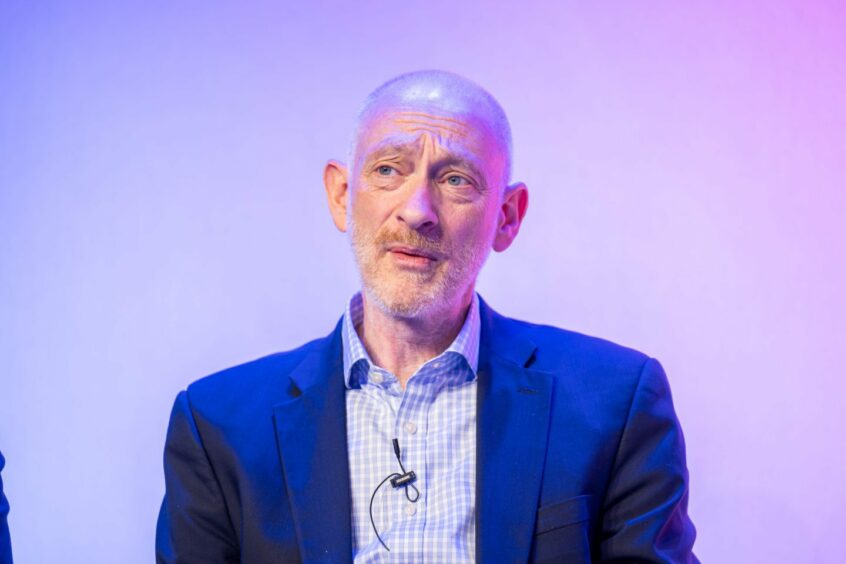
It is likely the UK will fall short in its quest to have 50 gigawatts (GW) of operational offshore wind by the end of the decade.
Benj Sykes, UK team lead at Danish renewables giant Orsted, says it will be a “massive stretch” for industry to deliver the 2030 target that has been laid down for it.
He also told the Subsea Expo conference in Aberdeen that developers have been attempting to temper government ambitions, whereas it tends to be “the other way around”.
That hasn’t stopped ministers progressively ramping up their expectations for the sector though, culminating in a 50GW target by 2030, announced as part of Westminster’s energy security strategy.
For context, the UK’s offshore wind sector deal, published in 2019, had a 30GW by 2030 target.
As it stands, around 14GW of capacity is operational in UK waters, with scores more projects in the pipeline, a huge amount of which will be in Scotland.
On whether the UK can hit its 50GW target, Mr Sykes laid out a number of hurdles that will block the path.

He said: “Can we get to 50GW by 2030; I think that’s a massive stretch. I do think we certainly achieve 40GW, and that would be a fantastic achievement if we get there. That would be a huge scale up, and at around £2.5 billion per gigawatt, that’s a big chunk of investment as well.
“The big challenges are around grid. It’s all well and good building the biggest wind farm in the world – we’ve done it five times at Orsted – but if you haven’t got anywhere to plug it in, then it’s not a lot of use. National Grid is really challenged to deliver the infrastructure that the offshore wind sector needs, specifically in Scotland.
“The other challenge is planning; the planning system is not fit for purpose and the government is currently reforming it.”
“There’s also the supply chain. The UK isn’t the only nation that wants to accelerate its offshore wind buildout, and there is a massive squeeze in the supply chain, whether that’s foundations, turbines, cables or vessels.”
Mr Sykes, known to many as the godfather of offshore wind, added: “We won’t get to 50GW, but I’m confident we can knock 40GW off.”
Expectation on offshore wind has increased in the last year following Russia’s attack on Ukraine, and the subsequent energy security scramble.
Government wants the technology to be the mainstay of the UK’s power mix, but more challenges are emerging as the global ramp up increases.
Subsea defence
Ministers and industry are also having to factor in defence of critical assets, especially following last year’s sabotage of the Nord Stream pipeline.
That is an area where Mr Sykes says subsea technology and capabilities can come into their own.
He said: “On the criticality of national infrastructure, offshore wind is becoming the backbone of the UK’s electricity system, and that will accelerate. There is no doubt that protecting national infrastructure is a big focus right now.
“There is no doubt that the subsea technology sector is going to be vital in protecting our national interests, whether that’s hydrocarbons, offshore wind, marine energy, and indeed our food supply.”
Recommended for you


 © Source: Swedish Coast Guard/Getty Images
© Source: Swedish Coast Guard/Getty Images